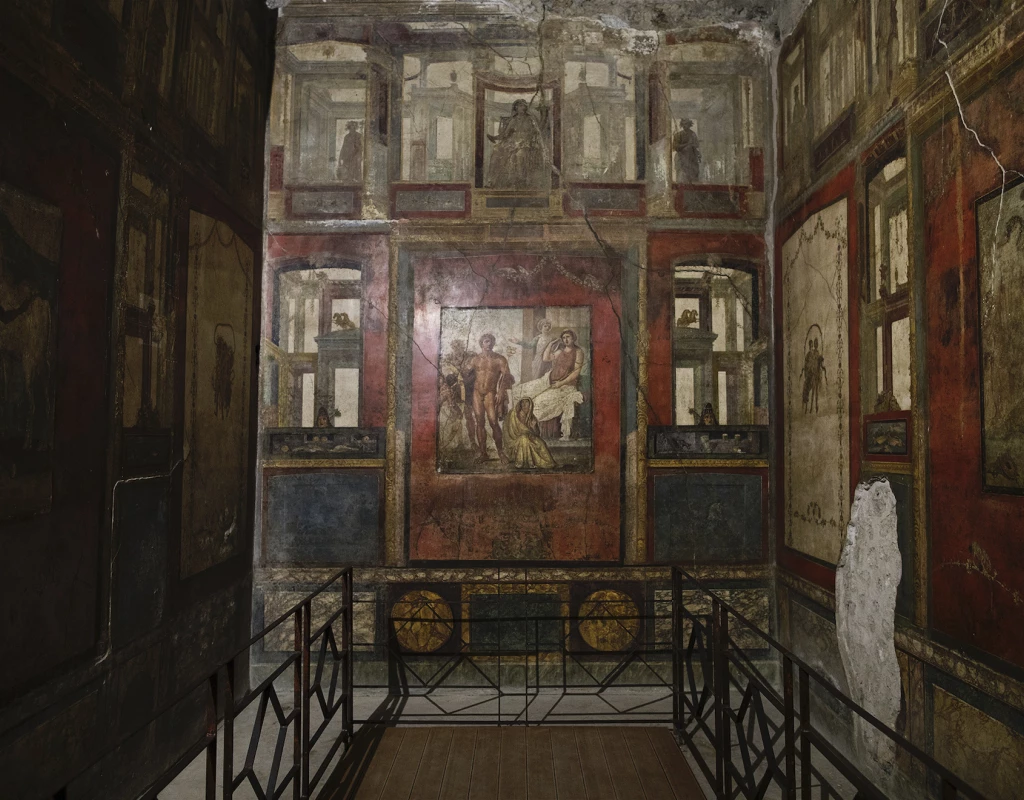Pecunia non olet, says a Latin expression attributed to the emperor Vespasian. A maxim was interpreted by two Pompeian brothers of humble origins, who suddenly became very wealthy.
At dawn on October 24, 79 AD, Aulo Vettio Restituto and Aulo Vettio Conviva were highly regarded in the Vesuvian civitas. Their residence was, and still is, among the most beautiful in the archaeological site.
The Vettii lived in the current Regio VI, one of the chic neighborhoods of the time. They changed their status of freedmen by making a fortune in the wine and agricultural products trade. These activities made them among the wealthiest residents of the city. And they showed off their rapid aristocratic rise with the pomp of a villa with two atria, a large tufa impluvium and a home furnishings typical of the most cheeky patricians. The eruption of Vesuvius left some objects, which made it possible to recreate the story of the two brothers. A arrogant opulence also testified by the discovery of two huge chests with iron bars and bronze studs shamelessly put on display... without concern of burglars and delinquents!
The fresco depicts Ariadne abandoned by Theseus on Naxos | Ph. Roberto Salomone
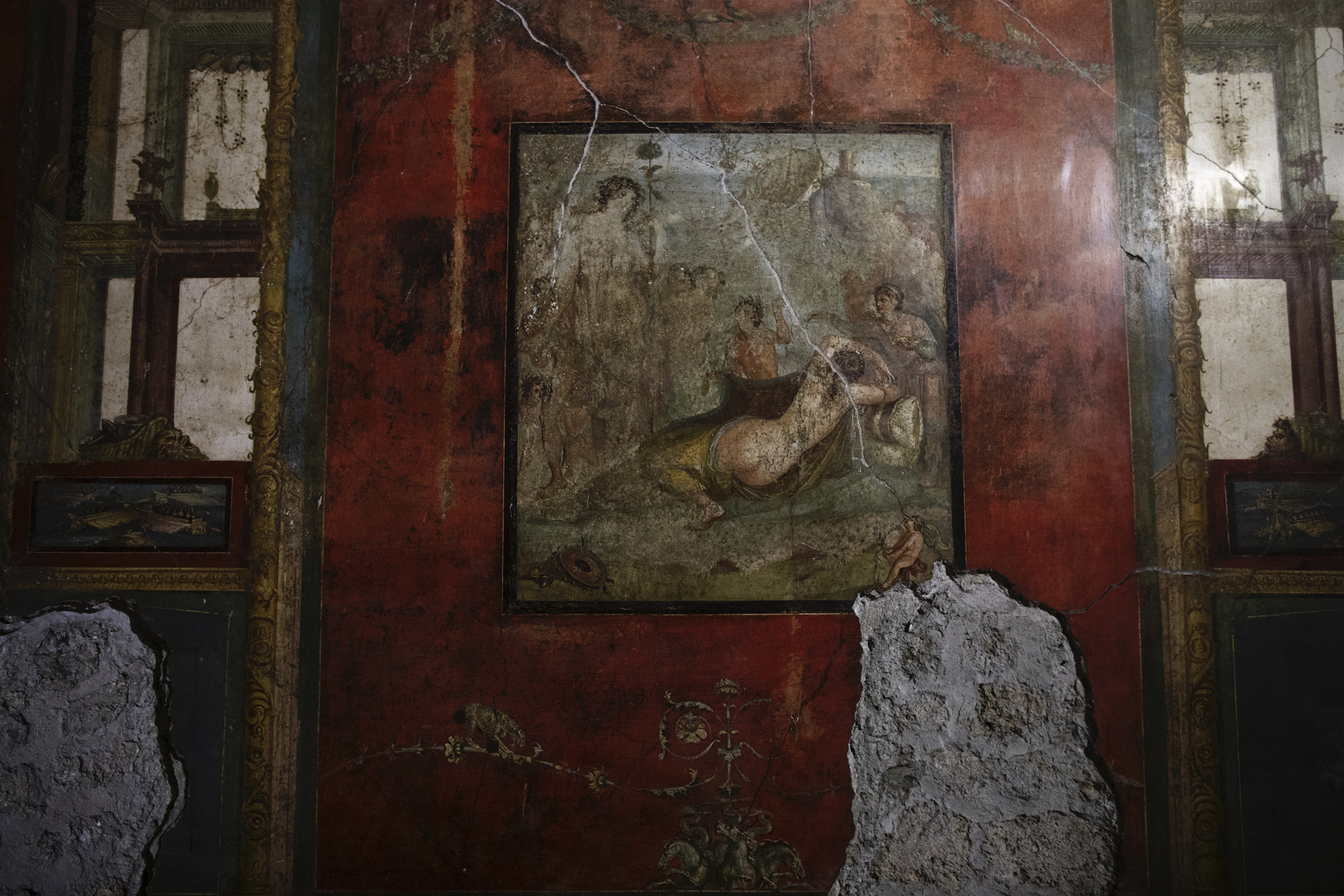
An on the top of that, to increase the proceeds of the family business, the two even started a collateral activity based on prostitution. Among the rooms of the house, a cramped one is decorated with a series of erotic paintings. Here Eutychis prostituted himself. She was a Greek slave, with good manners, who offered herself for two aes librale (ancient Roman coins), as we learn from a graffiti carved even at the entrance of the house.
For pity’s sake, nothing illegal in ancient Rome, where sex was not a taboo and prostitutes were recognized as professionals. In fact, Vettio Conviva, one of the protectors of Eutychis, serenely carried out the office of Augustale.
Eutychis, graeca a(ssibus) II morbus belli
Eutychis, greek, with good manners for two aes libraleInscription on the house of the Vettii
Entering the house it seems to leaf through a book of mythology. The frescoes, perhaps among the best preserved in Pompeii, tell the story of heroes and Greco-Roman legends with an abundance of details. On the first wall Priapus is illustrated, who lays his huge sexual organ on the plate of a scale, while on the other one, a bag with coins is weighed. The Vettii invoked wealth and health (represented by the phallus) to protect the house against the iatures of envious citizens who did not willingly accept their social climb.
Another statue shows how impudent but superstitious the former freedmen were. It always symbolizes Priapus and is in the atrium, but originally it was a garden fountain with gushes of water coming out of its penis.
The fresco depicting Priapus | Ph. Roberto Salomone

The statue of Priapus | Ph. Roberto Salomone
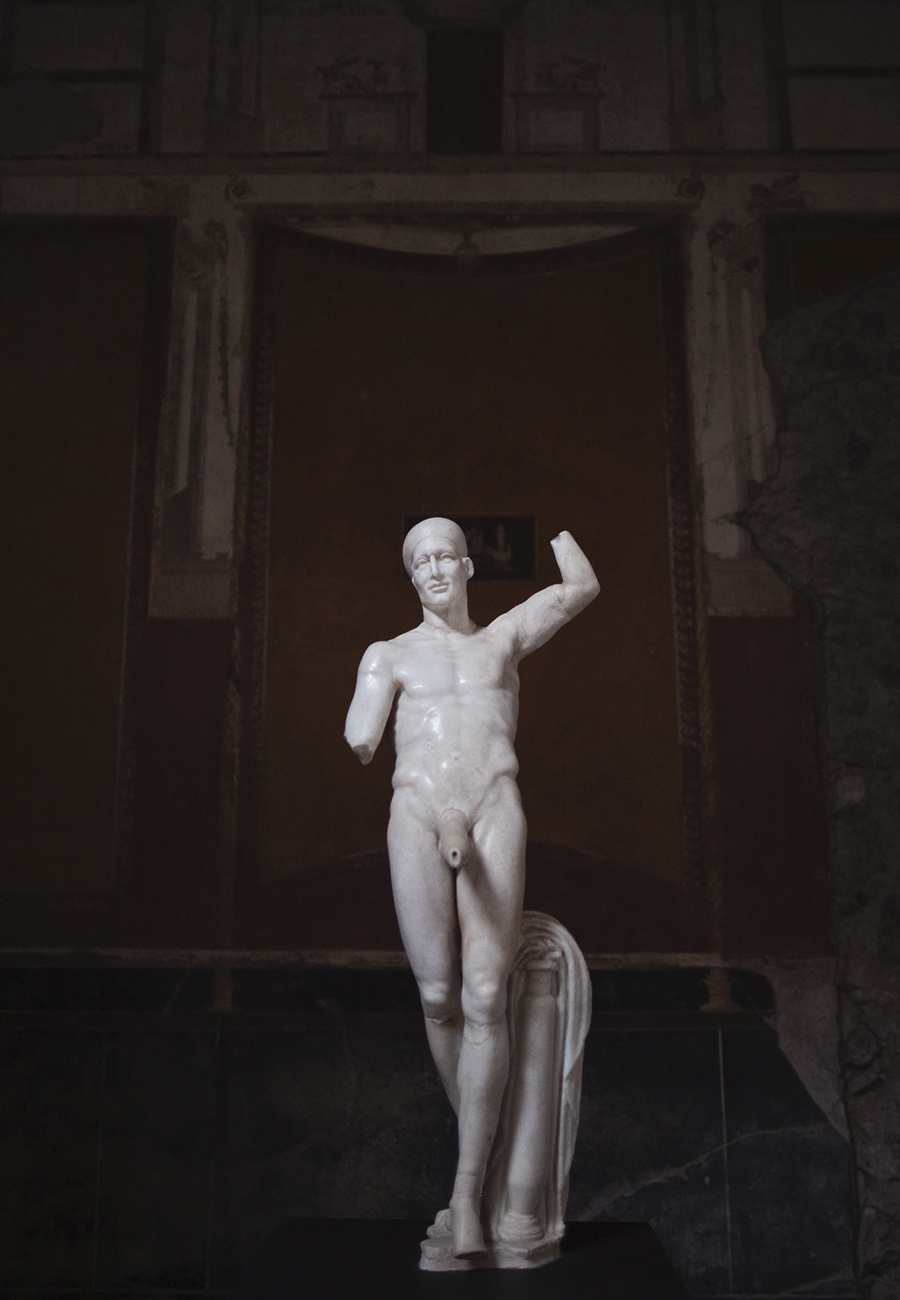
The fulcrum of the house is the garden surrounded by a peristyle on whose walls there is a round up of fantastic events that give life to an authentic 2000 years old art gallery. The revenge of Amphion and Zetus for the death of his mother Antiope, the killing of the king Pantheus because he forbade Thebes from the cult of Dionysus and Hercules, who as a child chokes the snakes sent by Juno.
On the other side of the portico the mythological saga continues with Dedalo, who gives Pasifae the wooden cow from which the Minotaur will be born; Ariadne abandoned by Theseus on the island of Naxos, and Mercury, sent by Jupiter, who binds Ission on a wheel of fire that turns tirelessly in the sky, to punish him for having coveted Juno.
Ph. Roberto Salomone
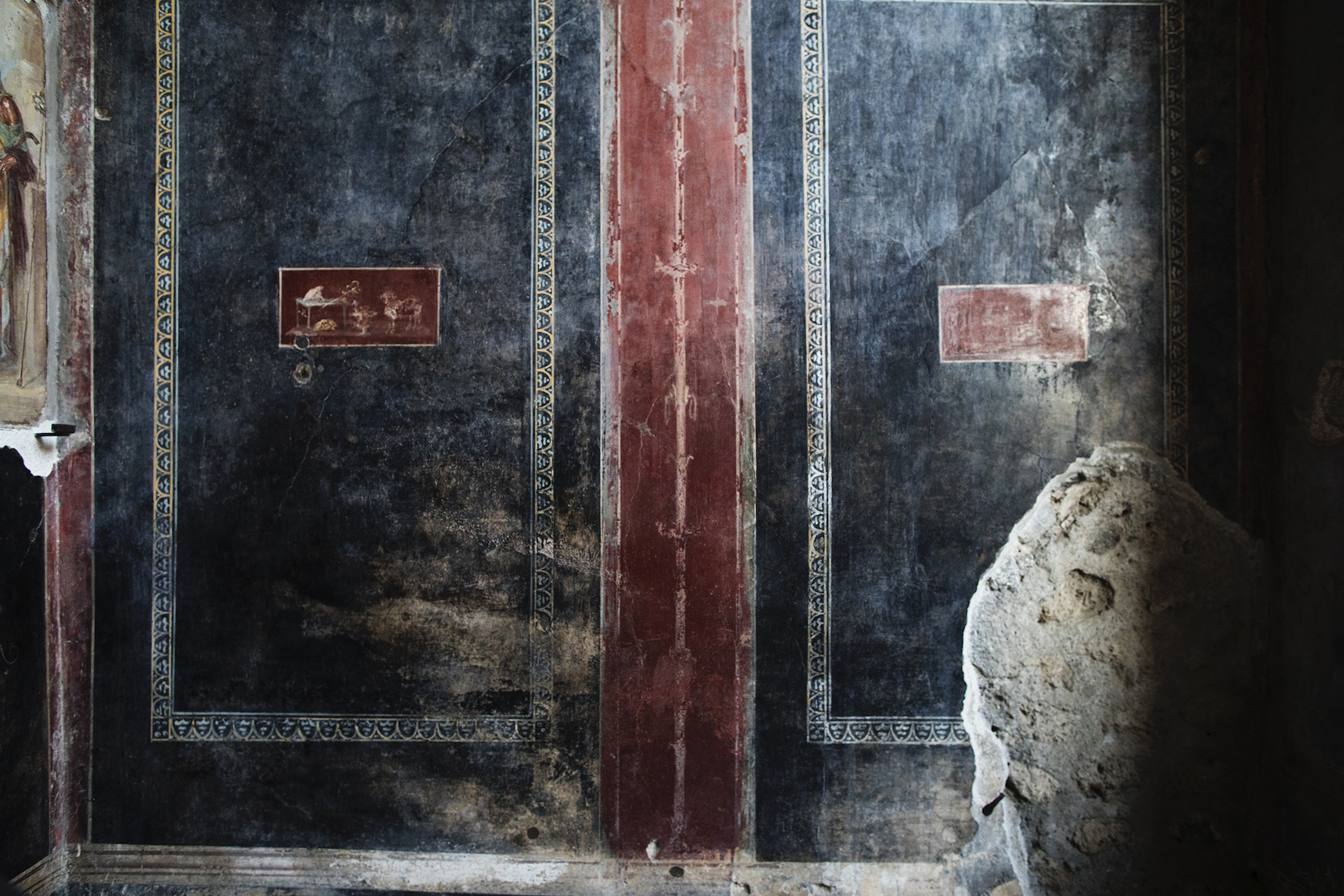
The most decorated rooms overlook the portico, including the triclinium, the dining room where the Vettii organized Lucullian party. Stretched out on triclinium beds, diners enjoyed meats seasoned with garum and made a toast with goblets of wine mixed with honey in front of beautiful Amorini friezes intent on carrying out the main productive activities of the time: from the trade of wine to the cleaning of clothes, from the cultivation of flowers to the harvest, from jewelery to the creation of perfumes.
In the center of the room, however, there are no paintings because evidently they had not yet been painted in 79 AD. The mythological saga continues with a series of scenes in the cubicles that also recall the myth of Ciparisso, the only representation of this character in the ancient world.
Ixion bound on a wheel by Volcano | Ph. Roberto Salomone
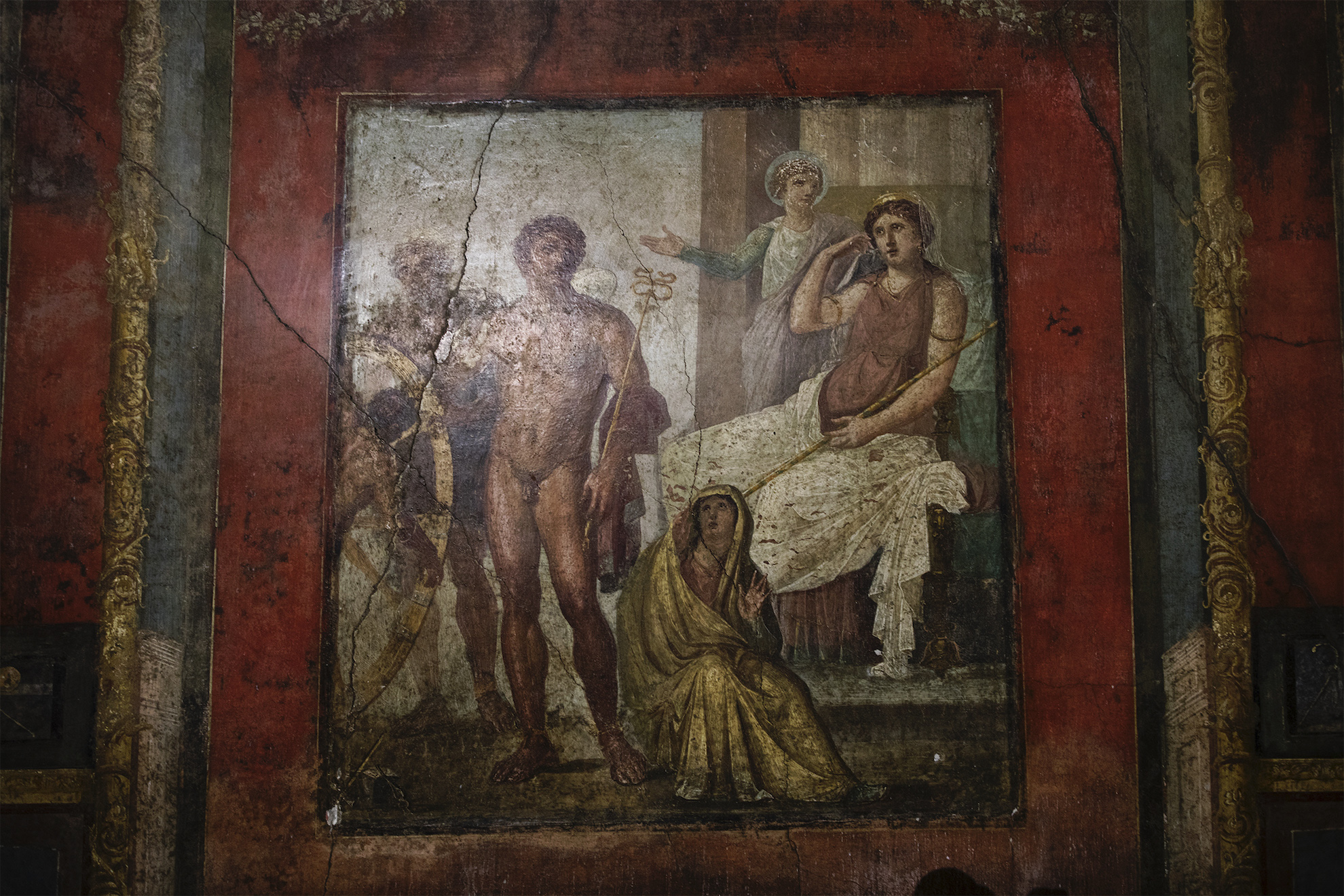
The excessive luxury of the Vettii was born from the desire for revenge by two vulgar individuals. Fate wanted them to be slaves, but Restituto and Conviva were able to take revenge. However, they couldn't do anything against Vesuvius. And the much-desired maximum pecunia non olet gave way to the undeniable Memento Mori.
